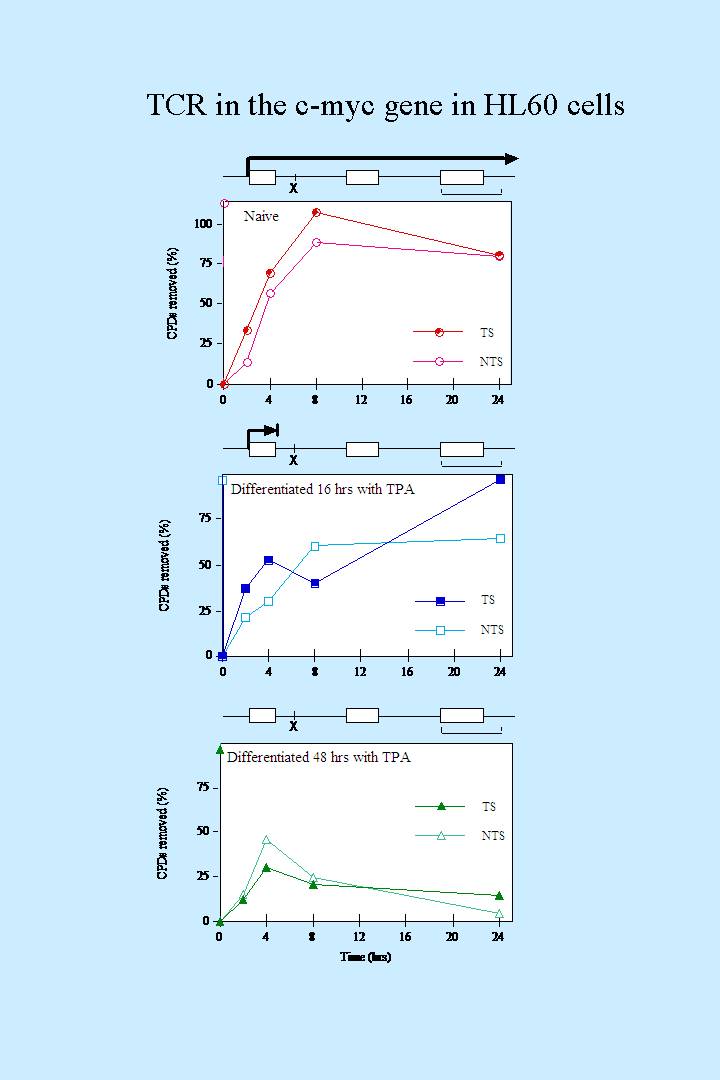
The c-myc gene is transcribed
in actively growing HL60 cells, and silent in
cells differentiated for 48 hours. In cells differentiated for only 16
hours, the gene is transcribed upto the end of the first exon.
Repair
was measure downstream of the point where RNA polymerase II stops: the
X represents the XbaI restriction site used for
Southern analysis, the bracketed line shows
the location of the strand-specific probes.
Because there is very little global
genome repair of CPDs at 16 hours, the observed repair can only be
attributed to DAR.
Which allows us to conclude that:
1) DAR operates on both strands,
2) DAR need the gene to be transcribed,
3) But does not depend on RNA polymerase II to detect lesions.
A likely possibility is that DAR is due to a higher proficiency of NER
in the nuclear sub-compartments where transcription takes place.
In cells with poor global NER, simply bringing a gene into such a
"transcription factory" would grant it preferential access to the
remaining NER activity.
